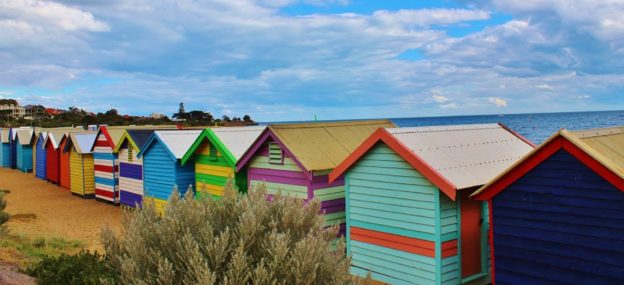Australian Millennials are world renowned for their free-rolling, adventuresome travel spirits. But after a few years of bouncing around the globe, the majority of adventurers return home to AU to carry on with daily life. When you consider just how amazing travel and cultural exposure can be, the impulse to return home is really quite something.
Sure, not everyone feels the desire to go back home to put down roots. But given the general social prevalence of the phenomenon, it’s hard not to compare it to the behavior of wild animals, like the sea turtles who swim thousands of miles just to lay their eggs on the beaches where they themselves were born.
Perhaps a human’s homing tendency is a simple procreation drive for us as well, but there seems to be more to it than that. Even the freest of free spirits who live out of their vee-dubs for years on the road can wake up one day and feel the pangs of home. It’s hard to identify exactly what that feeling is without slipping into the overly-sentimental danger zone, but it has to do with the natural environment, the people, and the simple fact of familiarity. The most human way to wrap all of those things into one nice package is by integrating them into a single nest; in other words, building a home on the land we know best.
For all the factors that feed into the homing instinct, young Australians are still facing one big problem: they’re having a very difficult time actually becoming homeowners in their home country.
In fact, Aussie Millennials have such a low rate of homeownership that they ranked second-to-last in a recent HSBC study examining the state of homeownership worldwide. Only the UAE has a higher discrepancy between wage prices and home affordability. The study found that 83% of Australian Millennials intended to buy a house within five years, and it also suggested that this hope was unlikely to come to fruition based upon their income and the housing market.
Instead of sulking in the glum of their situation, Millennials are getting creative. They’re building their lives around mobility. The advent of smartphone technology has opened up a whole new world for mobile Millennials — not only can they be self-employed and work from anywhere, but new technologies allow them to track every mile they travel for business and report it on their taxes. Every 1,000km traveled for business is equivalent to $660 in tax deductions. Over the years, that adds up to enough for a down-payment on a house.
For all of the existential underpinnings working in favor of Millennials becoming homeowners, the barrier to that dream is really quite straightforward. Money. Traditional employment wages simply are not high enough for young people to be able to afford the huge houses built by their parents’ generation.
According to John Power of The New Daily, a preliminary release of the 2016 census points to fewer people in Australia owning their homes outright, more people paying mortgages, and more renting. While the market has fewer first-time homeowners, there are substantially more people buying their second or third homes. The wealthy prosper while the middle class disappears.
Once again, a Millennial’s only recourse to such a seemingly bleak market is to turn the model on its head with some creative problem solving. Because the housing market is in such a weird state, in some regions the decline in homeownership has opened up a surprising window for creative-minded people. In Perth, for example, the cost of servicing a mortgage dropped more than $200/month in 2016 alone. As a result, the large homes that were once financially out of the question are now a viable option for community living. Community living is defined as several people without family ties who share a household and all its responsibilities. It’s a clever solution to the issues posed by modern single-family living, both the financial woes it presents and the psychological isolation it unwittingly fosters.
One of the surprising side effects of the present housing market is a society-wide re-examination of individualism. Are we, as people, really best served by living in large homes that keep us isolated from others? Perhaps not. We are wired for human connection, it’s simply the chemistry of our brains and the stuff of our hearts. It’s becoming quite clear that with a bit of creative thinking and an awareness of our basest of human instincts, a little thing like a crummy housing market won’t keep the Aussies down for long.








